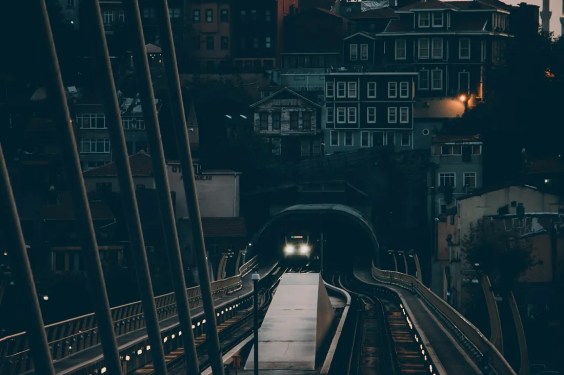Alameda County could usher in a new era of progressive transportation projects if voters pass a proposed half-cent sales tax increase known as Measure B1 on November 6.
Measure B1 would generate a projected $7.8 billion over the next 30 years for projects selected using a “complete streets” approach aimed at improving the county’s streets, trails, and transit infrastructure to accommodate all modes of transportation. The measure would double the county's existing half-cent transportation sales tax, with 48 percent of the revenue devoted to improving transit, 8 percent to bicycle and pedestrian projects, and 39 percent to roads and highways. If approved, it would represent an unprecedented commitment to non-motorized transportation.
“It’s sometimes incredible to believe that Alameda County is taking a national leadership role, but they are,” said Dave Campbell, program director for the East Bay Bicycle Coalition. “And we’re proud of them, and working closely with them to get this passed on November 6.”
County officials say they were motivated to put together the plan, in part, by the state’s requirement to decrease greenhouse gas emissions. Achieving those goals would require a major shift from driving to walking, biking, and transit in Alameda County.
The projects included in Measure B1's funding plan could provide a dense network of trails, bicycle boulevards and bike lanes, as well as pedestrian safety improvements throughout Alameda County, helping to realize the vision laid out in its soon-to-be approved Bicycle and Pedestrian Plans. Off-street bicycle and pedestrian trails -- including the Bay Trail, the Iron Horse Trail, and the East Bay Greenway -- would connect BART stations in the eastern and southern parts of the county. Although 39 percent of the funds would be devoted to car-oriented infrastructure like roads and highways, some of those funds would also go toward creating bicycle and pedestrian highway crossings, bringing the potential total of bike/ped funding up to about 11 percent.
Measure B1 would also restore most of the AC Transit service cuts made in 2009, with the agency receiving $1.45 billion -- nearly 19 percent of the total funds. It could also fund transit projects like a BART extension to Livermore (which does have its critics), along with a new BART station between Fremont and the Warm Springs extension, which is already under construction.
“We’re just really excited about this plan,” said Tess Lengyel, deputy director of policy, public affairs and legislation for the Alameda County Public Transportation Commission. “We really think it can be a tipping point for Alameda County – our mobility and our economy.”
A two-thirds majority vote is required to enact the measure, but it's been broadly endorsed, with labor unions, environmental groups, transit and street safety advocates, and all of the county’s 14 cities lending support. A number of local media outlets have also backed the measure, including the San Francisco Chronicle, the East Bay Express, and the SF Bay Guardian, which called it "quite possibly the most important thing on the East Bay ballot." Nationally, similar ballot measures have enjoyed a promising 86 percent success rate so far this year.
"People really understand what this kind of investment means for the vibrancy of our community,” Lengyel said.
Measure B1 would double an existing half-cent sales tax approved by voters in 2000, which has since provided the bulk of Alameda County’s transportation funds, bringing in more than $100 million per year. In comparison, federal and state sources each dole out about $15 million per year to the county.
The original sales tax is set to expire in 2020, but most of the projects included in its funding plan have been completed. Measure B1 would bring the county an additional $100 million per year, with no expiration date. The funding plan would be updated every 20 years.
The off-street trails and local bicycle improvements will make biking a whole lot more enticing, said EBBC's Campbell, who predicts the number of bicycle trips in Alameda County could triple if all of the plan's projects are completed. The rate of commute trips made by bike varies from city to city, but Berkeley is at the top of the list at 8 percent -- the fourth-highest in the nation, according to the U.S. Census's American Community Survey. According to EBBC polls, countywide attendance at Bike to Work Day increased by 43 percent in 2007, and has continued to rise since.
Still, Campbell says the number one reason people say they don’t bike is safety. He pointed out that most drivers wouldn’t be very happy if a road suddenly stopped, but for people bicycling on Alameda County's poorly-connected bicycle network, that's what it often feels like. Passing Measure B1, he said, is key to funding a continuous network of bike-friendly streets.
“It will allow you get around town from where you live, to where you work, to where you’re going," said Campbell. “It’s huge.”






